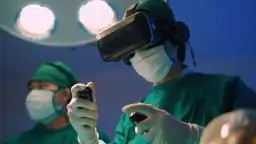Lack of readily available blood is the most common cause of potentially survivable death in trauma in both military and civilian settings. This is because whole blood is complicated to manage as it has limited viability, requires cold storage, and is not always available due to logistical challenges and donor dependence.
Blood should be administered in 30 minutes or less
Making things even more difficult is the fact that, to improve chances of survival in trauma settings, patients should have access to blood in 30 minutes or less. This is something that is not achievable with real donated blood.
Now, DARPA’s Fieldable Solutions for Hemorrhage with bio-Artificial Resuscitation Products (FSHARP) program has an ambitious plan to engineer a field-deployable, shelf-stable whole blood equivalent that can be used to resuscitate trauma patients when donated blood products are not readily available, according to a press release by the organization published on Tuesday.
“When blood donations decline – as we have seen during the COVID pandemic – that threatens availability everywhere, even in high resource settings. Blood availability also could be at risk in military engagements with large numbers of casualties, with a sudden and significant increase in need,” stated Cmdr. Jean-Paul Chretien, DARPA’s program manager for FSHARP and a U.S. Navy medical officer.
“The primary problem FSHARP aims to solve is whole blood’s dependence on cold chain and resupply.”
Ultimately, the FSHARP program aims to leverage advances in bio-artificial blood substitute technologies to develop field deployable, shelf-stable hemorrhage countermeasures to sustain warfighters and civilian casualties in austere, pre-hospital settings.
They plan to do this by integrating multiple bio-artificial and synthetic components to deliver oxygen, stop bleeding, and replace volume—essential therapeutic functions of whole blood in resuscitation. They will evaluate efficacy and safety in increasingly complex and realistic trauma models and intend to develop strategies for stabilizing the product for months without cold storage and scalable manufacturing methods.
A multi-purpose team for a lofty goal
A team at the University of Maryland, Baltimore (UMB) has been selected to lead this effort with support from Case Western Reserve University, Charles River Laboratories, Haima Therapeutics, KaloCyte Inc., Latham Biopharm Group, Ohio State University, Pumas-AI Inc., Southwest Research Institute, Teleflex Incorporated, the University of California San Diego, and University of Pittsburgh.
“This is truly a ‘DARPA Hard’ problem and an example of DARPA’s ability to facilitate the partnerships needed to achieve technological breakthroughs,” added Chretien.
“To address FSHARP’s goals requires multiple universities and companies developing analogs of various blood components, simultaneous evaluation of multiple efficacy and safety features and interactions among components in various model systems, industrial-scale manufacturing capabilities that can adapt the lab-scale methods, and analytics to integrate large volumes of experimental data and guide further optimization. UMB has assembled a consortium with the broad capabilities needed to accomplish these tasks.”
In November of 2022, in what was called a breakthrough in medical science, red blood cells grown in a laboratory were transfused into volunteers in a world-first clinical trial. Is the future of transfusion artificial blood?


Is this the development that will change engine performance forever?

 Transforming future health care technology in the U.S.
Transforming future health care technology in the U.S.
 China and Russia just announced a joint plan to build a Moon base. Here's what to know
China and Russia just announced a joint plan to build a Moon base. Here's what to knowAI-powered investment fund beats the market by almost 100%
New OpenAI tool detects if text is written by ChatGPT or another AI
The 8-year-old app developer: Rishi Shiv Prasanna's inspiring story



